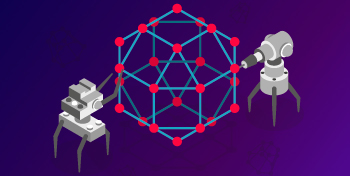Many complain that Bitcoin suffers from slow and expensive transactions. How to solve this problem? Why does Bitcoin need the Lightning Network at all, how it works, as well as its advantages and disadvantages.
If you are interested in finding out what the Lightning Network is, then we will tell you about what and how. Let`s go!
“Suffering from success”, although it is the name of a music album, is a phrase that closely echoes the problems faced by the Bitcoin network today.
If on Coinmarketrate.com if you delve into the study of the Bitcoin project, then at the very beginning of its existence it was considered as the most secure and reliable system that allows you to bypass the centralization and corruption of the inherited financial system. She gave people the opportunity to become the sole owners of their money, and to make transactions as they please, and with anyone, without unnecessary questions.
However, in order to guarantee such security, Bitcoin has submitted to what is now called the blockchain trilemma. According to the blockchain trilemma, it is technologically impossible for the blockchain to maximize all three of its fundamental characteristics: decentralization, security and scalability.
As is obvious, Bitcoin compromises its scalability and speed to achieve maximum decentralization and security.
All this was cool until the BTC became very popular. As more and more people came to Bitcoin, the transaction completion time increased even more due to network congestion. In addition, people wanted to use Bitcoin as a medium of exchange for their everyday transactions. But unreasonably low transaction speed and high cost have limited its use.
According to Blockchain.com, the average Bitcoin transaction time is from five to 10 minutes. In addition, the transaction fee for the most insignificant transactions did not fit into this equation in the best way.
Now it all depends on the circumstances. You can safely pay a dollar or 20, and wait 10 minutes or an hour to send several hundred, thousands or millions of dollars in Bitcoin. But imagine that you pay the same amount for the purchase of a can of soft drink, and wait for confirmation of the transaction in the store for five minutes. Not so cool and effective, is it?
The more transactions there are on the network, the longer it may take the network to process your transactions. The longer you have to wait in the store, the more you will be worried about people’s dissatisfaction with the fact that you take so long to make a payment.
Meet Lightning Network
The Lightning Network is a so-called second-level solution. As the name suggests, the second-level solution is an additional layer above the main blockchain, which seeks to increase the efficiency of the main blockchain network.
In the case of Bitcoin, the Lightning Network, introduced in 2015 and launched in 2018, is designed to provide maximum speed and minimize the commission for BTC transactions. To achieve this goal, the Lightning Network saves you from having to interact with the slow Bitcoin network protocol for each transaction.
Instead, you can create “channels”, so-called smart contracts, with the people you want to make transactions with. Inside these channels, you can add a crypto asset, and conduct all transactions almost instantly and with minimal costs.
To do this, however, the Lightning network interacts with the Bitcoin network to create and close channels. It sends data to the network about the first transaction to create a channel, and the last transaction to close the channel, as well as the final cost of Bitcoin owned by each participant. Thus, the Bitcoin network does not need all transaction data, but only the balance of each user at the time of opening and closing the channel.
It turns out that as long as the channel remains open, you and other channel participants can make transactions with each other in Bitcoin without interacting with its blockchain.
How it works in real life
Suppose you go to the grocery store every morning to buy milk and bread, and you pay in Bitcoins. To make your payments fast and cheap, you can create a channel with the owner of the grocery store, top it up with a certain amount in BTC (which remains yours until you initiate the transaction), and instantly pay for milk and bread daily.
Every day when you make a payment in Bitcoin, the channel updates its ledger (registry) to reflect your and the store owner’s current balance in Bitcoin.
When you decide that you no longer want to buy at this grocery store, you can close the channel, and you and the store owner, respectively, will receive the final balance recorded in the register on your wallets.
But… you already feel the problem, right?
Does this mean that you will have to create an individual channel for everyone with whom you want to make transactions? Yes and no.
Yes, because that’s how the Lightning Network works. No, because the Lightning Network can also process transactions through mutual channels. So let’s say you have a channel with your friend who has a channel with a pharmacy.
Now, if you want to make a Bitcoin payment to a pharmacy, you can do it without opening a new channel. When you make a payment, it will go from your channel with your friend to your friend’s channel with the pharmacy, thus reaching the destination. At the same time, the registers of both channels will be updated accordingly.
It is quite obvious that this ability is increasing as the popularity of the Lightning Network grows and the number of people opening new communication channels with each other increases.
It’s like if one Facebook friend has 200 friends, each of whom has another 100 friends, then your third-level network has as many as 20,000 people. If in the same example you replace Facebook with Lightning Network, then having only one channel with such a friend will help you make payments in Bitcoins for 20,000 people.
Now you can do the calculations. If you like.
And, of course, this process is mostly automated and user-friendly thanks to the ever-growing number of applications for the Lightning Network, the so-called dApps.
But, there are also disadvantages
They had to be.
The first and most important drawback of using the Lightning Network is that it does not allow users to use their crypto assets outside the channel(s) until the channel is closed. This means that although you pay the grocery store owner daily for milk and bread, he cannot use these funds until the channel is closed.
In addition, the Lightning Network is connected to the Internet 24×7, and there is no way, at least for now, to use a cold wallet with channels on the network. Thus, there is a security issue that encourages you not to store a large amount of Bitcoin on the network. After all, everything connected with the Internet always has risks associated with it.
Conclusion
Now is an exciting time for Bitcoin, and the Taproot update is of great importance for the community and for the crypto industry as a whole. Although this update will not allow NFT or other types of tokens to flourish in the Bitcoin ecosystem (this was not its goal initially), it will allow better use of Bitcoin’s core value propositions: store value and spend it. But we will talk about this update in the next article.
Currently, the first discussions are underway about expanding the capabilities of the Bitcoin cryptocurrency, which, in turn, may bring Bitcoin holders more standard cases of using DeFi.
This will increase its overall appeal to thousands of developers whose mission is to pave the way for continuous innovation, first-class security and faster data processing.
In order for Bitcoin to become a generally accepted medium of exchange, it is impossible to do without faster and cheaper transactions. And the Lightning Network, despite some shortcomings, contributes to this in the best possible way. So if there is no better way to avoid the problems associated with Bitcoin, the Lightning Network will allow you to make everyday payments with ease.


